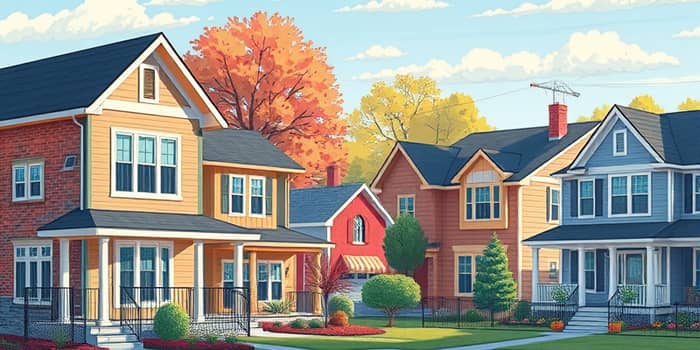
Today’s housing market feels like it’s at a crossroads. After years of record-breaking price runs and frenzied buying, activity has stalled, leaving many to wonder: is this a pause before a dramatic downturn, or simply the calm before another surge?
With home price growth projected at just 2% to 3% in 2025 and sales volumes at multi-year lows, the narrative has shifted from unstoppable boom to tentative caution. But beneath the surface numbers lie regional divergences, financing pressures, and shifting buyer psychology that defy simple characterization.
In this article, we’ll unpack the latest data, explore the core drivers carving divergent paths across the country, and offer practical guidance for buyers and investors navigating one of the most unpredictable markets in recent memory.
The U.S. housing landscape in 2025 is best described as “frozen.” After several years of double-digit appreciation, modest price growth expectations of 2% to 3% have tempered enthusiasm. Existing home sales remain exceptionally low, reflecting both affordability constraints and squeezed buyer budgets amid persistently elevated mortgage rates.
On the new construction side, sales fell sharply—down 13.7% from April to May (annualized) and 6.3% year-over-year. Builders are left grappling with an unprecedented level of inventory, even as purchasers hesitate to commit under current borrowing costs.
Inventory is finally on the rise after years of chronic shortage. New homes for sale now exceed 480,000 units, while speculative builds account for 385,000—both well above long-term norms. Existing single-family listings have climbed roughly 20% year-over-year, though they still lag behind historical troughs.
While the broad supply uptick edges the market closer to equilibrium, it still hovers on the tight side of a balanced market (5–6 months of supply). At the same time, increased price cuts—nearly 18% of listings in April—signal sellers adjusting expectations to meet cooler demand.
After years of significant gains, nominal home price growth is projected to barely outpace inflation in 2025. Income required to buy a home has soared by nearly $47,000 since 2019, pushing the dream further out of reach for many first-time buyers.
Mortgage rates hovering around 6.9% for a 30-year fixed loan have created a new barrier. Prospective purchasers face affordability pressures that deter many buyers, even as sellers grow more willing to negotiate in markets with rising inventory.
Is this scenario reminiscent of the 2008 collapse? Most experts think not. Today’s buyers have far more equity, and underwriting standards remain tight—a stark contrast to the subprime excesses that fueled the last crisis. Price appreciation over the past years reflected genuine demand and tight credit, not widespread speculation.
However, classic bubble warning signs—inventory gluts, widespread price cuts, stalling sales—are emerging in pockets. A sudden spike in rates, a deeper economic downturn, or a surge in distressed listings could act as catalysts for a sharper correction.
The gulf between markets has never been wider. The Northeast shows modest sales gains but limited new supply, keeping prices relatively firm. Meanwhile, the South and parts of the West are grappling with soaring new construction, declining resales, and rising vacancies in some suburban corridors.
Most forecasters anticipate a return to a balanced market environment by year-end, with neither buyers nor sellers holding a dominant hand. Yet this equilibrium depends on a delicate dance between supply growth and sustained demand amid looming economic uncertainties.
Whether you’re searching for your first home or eyeing investment opportunities, the current landscape demands both caution and conviction. Understanding local fundamentals is key to uncovering pockets of value and resilience.
In a market defined by contrasts—between boom and bust fears, buyer hesitancy and seller adjustment—the path ahead is neither predetermined nor uniform. By arming yourself with data, local insight, and strategic patience, you can navigate these shifting tides and emerge positioned for the next chapter of the U.S. housing story.
References













